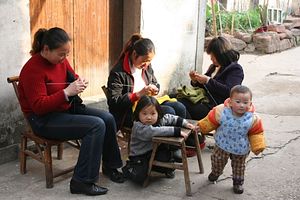One of the major reform policies introduced by the Fifth Plenum of the 18th Central Committee of the CCP in October 2015 was the universal relaxation of the one-child policy: any married couples who already have one child could have a “second-born child.” On the surface, it seems that this was a major step forward toward the relaxation of the controversial “one-child policy.” But upon further scrutiny, there are a few problems.
First, there has been no open acknowledgement of the problems associated with the “one-child policy.” It is well known that China’s huge gender imbalance could be largely attributed to this policy. Between 1980, when the Chinese Government started the “one-child policy,” and 2014, 675 million babies were born in China. With a male/female ratio of 114.7, there are now over 30 million more males than females.
On a related note, there is no recognition of the contributions made by those who provided “corrections” for the gender imbalance by having given births to “unwanted girls.” According to China’s 2005 Population Survey Data based on 1 percent of the total population, the gender imbalance reached an all-time high between 1987-1996 among single children, ranging from 150.23 to 169.75 males per 100 females. During the same period, the overall gender ratios among the entire population ranged between 100.45 and 113.92 males per 100 females. In other words, there were “heroine” mothers who paid huge fines in order to give birth to female babies beyond their quotas, providing corrections for the stringent “one-child policy.”
Even now, it’s not quite correct to say that China has a “two-child policy.” The second-born child is permitted, not encouraged. There will be no punishment for the second child, but there is no monetary reward either. Most importantly, the monetary reward for the first child will likely be withdrawn. In fact, some regions have begun to demand families refund the monetary reward for having their first child when a couple expresses interest in having a second child.
As a result, the new policy will have a very limited impact on demographic changes in the future. Since Chinese families have accepted the concept of “one child,” the percentage of single children among the total population of the same age has reached a very high level, from 14.28 percent in 1980 to 57.34 percent in 2005. There will hardly be any difference among couples of both only-children (shuang du), couples of one only-child (dan du), and couples of any kind.
In the last sense, it is probably best to abolish the family planning system altogether and to allow anyone to have any number of children.
































